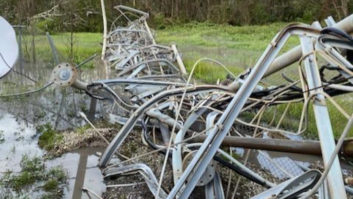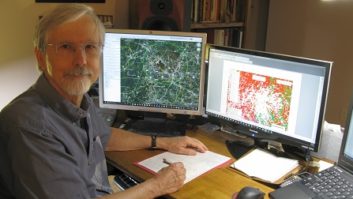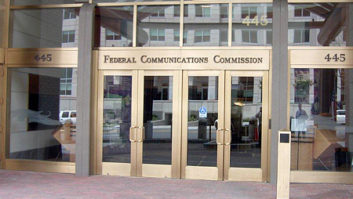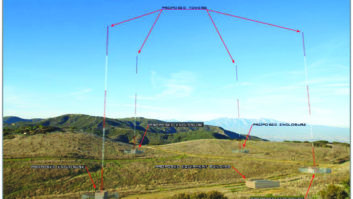Identifying tower sites
Jun 1, 2006 12:00 PM, By Kevin McNamara, CNE
If you have been in the business long, you have been, or will be, tasked with finding a new tower location. This happens for a number of reasons; one of the more common is that urban sprawl has caught up with your once remote site and the value of the property is worth significantly more money than your owners might see fit to pay. In real estate terms, this is called the �highest and best� use of the property and can be translated as �it will be easy to find an entity willing to pay too much for the property who will subsequently subdivide it and sell it for a huge profit to the general public.� Another common reason is that the same sprawl has moved away from your previously dominant coverage footprint, or maybe the owners purchased an under-performing facility and want to move it. Whatever the reason, you, as the engineer, will be thrown into the middle of the project and, in addition to your other duties, will take on the responsibility of finding a suitable property that will accommodate the new tower. This wasn’t a big deal 15 or 20 years ago when towers, and the issues surrounding them, weren’t a part of our life; but thanks to the advent of mobile telephones and the multitude of towers required to support a wireless network, everyone is extremely aware of their presence and the impact they might pose.

Finding a suitable location for a new tower involves working with more than just zoning laws.
I have been waiting for the one zoning hearing where I follow an attorney representing a broadcast group justifying to the board (and angry onlookers) how their 1,500′ tower is in the best interests of the people. I can imagine that my request for a 125′ monopole would go much easier than normal, assuming we can get the board to stop laughing about the previous request.
Where can we go?
You will typically start the process of finding a new tower site location armed with some form of area-to-locate study. This can be provided by a consulting engineer or can be created on the desktop with one of the available RF plotting programs. The purpose of this study is to overlay the relevant protection contours of the other stations on your frequency or adjacent frequencies. The specific criteria vary depending on the type (AM or FM) and class of service affected.
The end result is that you will be in possession of a topographic map depicting a suitable area where the station could be located and subsequently approved by the Commission. I want to caveat this by saying that these previous steps are good for the perfect world, but in practice will probably be much more difficult as a result of short spacings and grandfathered inference limits and other obstacles.

The FCC’s Towair program provides basic information about potential site issues that require further study.
Identify potential sites
Once you have narrowed the search to a particular area, the next obvious problem is to find a specific parcel of land that might work. You will also have some idea of the minimum size of property needed to accommodate the project. The good news is that there is a wealth of free information on local government websites. Note that I use the term �jurisdictions� to define the local, county, state or federal entity that has control over the specific area in which you are working. This is significant because some areas might require approvals from some or all of the above and you need to know how many of these entities must approve this and their filing process. It is not unusual to spend the time and money to take a project successfully through the zoning process only to find out you will not be able to file for the building permits until you get additional approval(s) from other agencies.
In the majority of urban areas, finding land is easier said than done. Developers and investors have been aggressively buying large tracts of land outside of urban centers with the intention of developing or selling as the metro expands outward in the future. Your company should not enter into any purchase or lease agreements for a property without first having this information � the cheaper property could end up costing more to get approvals than a costlier one.
- Jurisdiction(s) of the areaSome parts of the area are unincorporated or fall in jurisdictions where tower ordinances are �silent.�
- Zoning classification(s)Is it residential, industrial, agricultural? Residential makes the chances of approval almost zero, and the costs associated with the attempt to get it approved go up dramatically. Zoning maps are readily available at town halls or on the Web. A call to the zoning department will provide the specific process and possible timetable for hearings.
- Size of parcels availableSome areas might seem rather rural when driving around, however there might already be a subdivision plan approved or specified on the �master plan� of the jurisdiction.
- Areas of historical or archeological significanceFile for approvals from the designated state historical preservation office. Tip: If the proposed site is in view-shed of a national park, it will not be approved. You need to file and have approved an environmental impact report with the EPA prior to any tower construction.
- Local airports and heliportsRun the FCC’s online program called Towair (wireless2.fcc.gov/UlsApp/AsrSearch/towairSearch.jsp), which will provide cursory information as to any potential safety issues that require further study by a qualified airspace consultant prior to FAA approval to construct the tower.
- Environmental issuesFlood plains, wetlands, soils problems and wildlife habitants are areas to avoid.
- Prior use of the propertyHave an environmental contractor provide a �Phase 1� report that will reveal possible problems based on limited soil sampling and historical records. The conclusion of the report will reveal that there is no problem or may recommend a more comprehensive �Phase 2� study.
A zoning Primer
Many jurisdictions now have ordinances specific to the placement of telecommunications towers; however, every tower-specific ordinance I have seen was written largely for wireless sites either new towers on raw land or placed on existing building rooftops. Frankly, a proposal for a tower much over 300 feet will probably have the zoning board deferring to its attorney for a ruling on how it fits into the ordinance. The bottom line is that whatever your proposal is, it will be a “non-conforming,” meaning it does not meet certain requirements and therefore require a variance from the ordinance. The specific requirements are unique for each jurisdiction, but variances fall into either one or both categories:
“C” Variances (Bulk)
Filed when an applicant seeks an exception to the strict application of the zoning ordinance. Bulk variances are filed for the following reasons:
- Exceptional narrowness, shallowness or shape of a specific piece of property
- Exceptional topographic condition
- Physical features that prohibit construction if strict adherence to the zoning ordinance is applied
- Inadequate tower fall zone
The applicant must provide proof that strict adherence to the zoning ordinance would create exceptional practical difficulties and undue hardships.“D” Variances (Use)
Filed by an applicant for one of the following reasons: - To construct or create a use or principal structure in a zoning district that has restrictions against such use or principal structure
- To expand a non-conforming use
- To deviate from a conditional use requirement The applicant must demonstrate that special reasons exist for the granting of the variance and that same would not result in significant detriment.
Along with the application and appropriate fees, most jurisdictions require a stamped and sealed set of zoning drawings, which will contain a site plan and elevation of the proposed project. You may also be required to provide photo simulations and site line drawings. It is not unusual for them to ask for a test balloon to be deployed at the proposed height so board members and the interested public can view. Realistically, this is not practical for taller towers. Also, be prepared to craft a bullet-proof justification for your need; public hearings can be nasty and the stuff newspapers and TV news departments love.McNamara is president of Applied Wireless, Cape Coral, FL.











